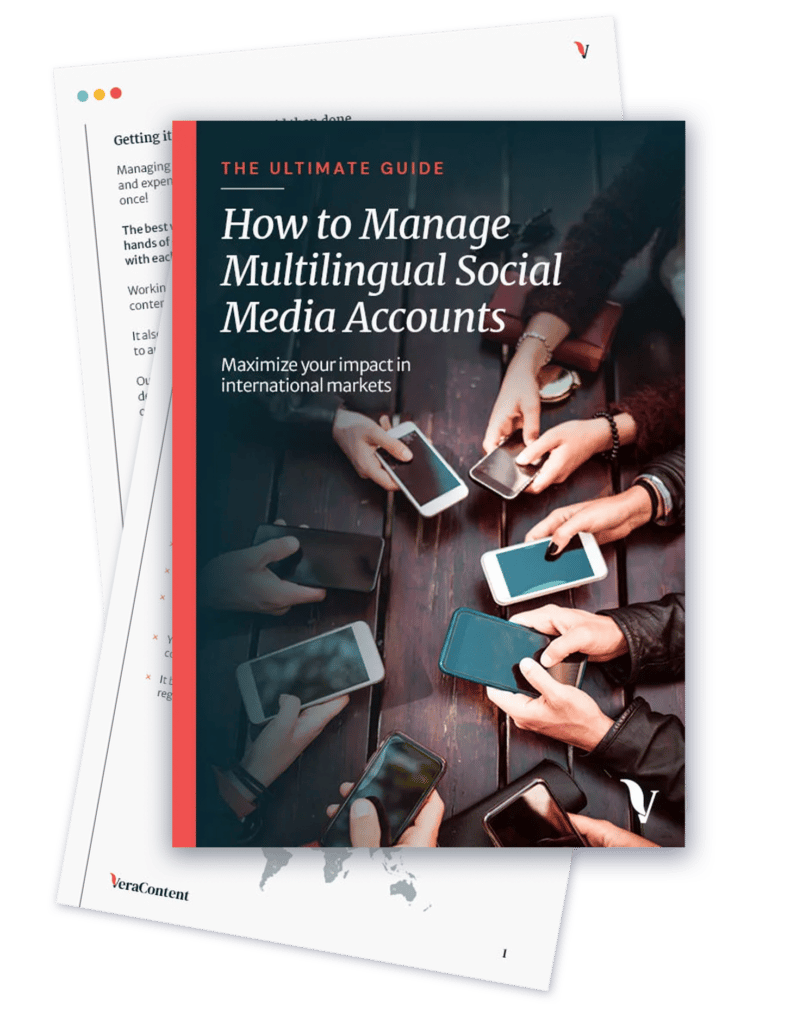Meta algorithm changes are once again affecting how businesses approach their marketing on Facebook and Instagram. Understanding and adapting to these shifts is key to creating content that resonates with your audience and maintaining successful campaigns on these platforms.
Algorithm changes are not just a small shift. They can affect your entire marketing strategy, from the content you make to which audiences you’re targeting and how. Meta’s recent focus on discovery and AI technology may have already impacted your metrics and left you wondering what to do next.
In digital marketing, it’s essential to be flexible, and Meta algorithm changes are proof of that. They may seem like a lot to navigate, but keep reading to learn about the biggest changes and how to best respond and adapt.
Meta’s evolving algorithms and their impact on global marketers

Meta, which owns both Facebook and Instagram, regularly changes their algorithm—that is, it changes how and why certain content and ads are shown to specific users. Its ultimate goal is to keep users engaged and returning to its platforms.
Each user has a personalized ranking. Meta combines each user’s behavior and feedback with post data and its algorithm to create a unique feed tailored to that user. Staying up to date with the algorithm helps ensure your posts and ads reach the right people.
Facebook and Instagram rank content by:
- Inventory: all content and posts a user could potentially see
- Predictions: How the algorithm thinks users will engage with specific posts, based on past behavior
- Relevance: How relevant a post is to a user’s interests and past behavior
- Signals: Things like a user’s comments or likes, time spent watching videos or reels, and what kind of content a user prefers
- Post source: If a post comes from an account a user often interacts with
- Content type: This refers to whether a post is a text post or a reel and the kind of content (for example, fashion trends) in said post
- Likelihood of user engagement and interest: Uses an AI model based on relevance and past behavior
- Relevance and recency: In general, newer posts get higher visibility, but if an old post suddenly gets a lot of engagement, Facebook will push it to more users’ feeds
The Facebook algorithm currently prioritizes:
- Friends and family members over businesses
- Posts with many long comments
- Many and a variety of reactions
- The content type a user engages with the most
The Instagram algorithm currently prioritizes:
- Posts with lots of likes
- Posts created within a few minutes of users logging on
- Posts with hashtags the user follows
- Brand and friend/family content equally
- Posts from accounts a user doesn’t follow with high engagement and using hashtags the user doesn’t follow
Meta doesn’t share their exact algorithm with marketers, though they do give information and recommendations when big changes occur. Every time Meta updates the algorithm, businesses must adjust their strategy to align with what they believe Facebook and Instagram users want to see.
All of this means that certain content or posts that may have done well in the past now may not, and vice versa. It’s key as a digital marketer, no matter which industry you’re in, to keep up with all of Meta’s algorithm changes to continue making effective content for your audiences.
Change #1: Reacting to AI content

The rise of AI content has become an oft-discussed topic in marketing. One of the top digital marketing trends of 2025 is social media getting flooded with AI. As one of the world’s largest technology companies, Meta’s new changes address this massive shift in how people create and consume content.
It’s an important topic, as many consumers are hesitant about AI’s proliferation online. In a Q4 2024 consumer survey, 83% said they believed that AI will oversaturate their social media feeds, and 80% think it could increase the spread of misinformation. While 74% said they’re comfortable with brands using AI to provide enhanced customer support, its role in actual content creation is still being cautiously accepted.
Meta has been criticized recently for its implementation of AI, and seeming lack of desire to tamper down on “AI slop content” on Facebook. Most notably, in January the company announced its plans to launch AI-generated user profiles (called “personas” with profile pictures and bios) that could autonomously create and share content. This move sharply divided audiences, who feared that Meta was accelerating the pace at which purely AI-generated content becomes prominent in an average user’s feed.
Meta is investing in AI-powered features like “Imagined for You,” which serves AI-generated images in users’ feeds. However, Meta isn’t overtly encouraging or discouraging AI-generated content in its algorithm updates—for instance, it’s not boosting its reach over human-generated content. Rather, their algorithmic approach is based on transparency and risk management.
Starting last year, Meta began implementing tools to label AI-generated content better. Posts either self-reported or determined by Meta’s algorithm to be generated by AI have an “AI info” tab that gives users more information about the tools that may have been used to create those images. The algorithm also downgrades or flags content it determines may contribute to misinformation: content with factual inaccuracies, sensationalism or deceptive explanations, for example.
See also: Labeling AI-generated content properly (and how to avoid it)
How you can adapt to this change
- If you use AI-generated content, develop workflows that include human editing and fact-checking
- Adopt internal guidelines for labeling AI-generated content
- When possible, invest in high-quality and interactive content

Change #2: Content recommendations

While Meta already has a lot of factors affecting how it ranks and places content in users’ feeds, in 2025 it’s also implementing AI-powered recommendations to suggest content from accounts a user doesn’t follow. This creates opportunities for brands to get strong engagement from users outside their typical audiences.
The AI model prioritizes high-quality, original posts. Posts with high numbers of comments, shares and watch time are more likely to be pushed out to new audiences. Meta has also said that it’s currently prioritizing short-form video posts in organic reach above other types of content.
The model also downgrades attempts to game the system, like posting clickbait or gaming statistics with inauthentic engagement. In short, make sure your organic content is as well-thought-out as your paid content. Thanks to this change, anything you post could be pushed out to potential customers, so make sure everything is attention-grabbing and engaging.
How you can adapt to this change:
- Create content that invites genuine, meaningful engagement. Ask thought-provoking questions and respond to users’ comments to create organic discussion. Interactive content, like polls and quizzes, are proven to stimulate engagement.
- Regularly post short-form, vertical videos with captions and exciting hooks
- Prioritize content that encourages private sharing. Typically, educational, inspirational, entertaining and conversation-focused content are most effective to share.
- Research your audiences to better learn what content is meaningful and relevant to them
Change #3: Paid Content

Beyond organic content, Meta is also updating its ad algorithm and changing what you can do on its platforms. These changes started in Q4 of 2024, but there have been some additional changes since the beginning of 2025.
For starters, let’s review what changed with Meta in 2024:
- Increasingly uses machine learning and AI for ad delivery
- Prefers broad audience targeting over narrow segments, saying that its AI will find the right audiences without you needing to segment them
- Prioritizes video content, particularly short-form video content/Reels
- Prefers structured ad campaigns with clear conversion goals, and deprioritizes individual boosted posts not attached to a particular campaign
- New AI-powered campaign types, including Advantage+ Shopping Campaigns
- New Incremental Attribution model
In addition, the increasing worldwide focus on privacy controls means that Meta has less individual user data to work with. Due to this, tracking user behavior and retargeting previous visitors have become more challenging.
More changes began implementation at the start of 2025 or are scheduled for the year:
Tracking changes
Meta removed the ability to use detailed targeting exclusions, which were parameters that allowed you to exclude certain audiences (based on parameters like age, gender or postcode) from seeing your ads. For example, a luxury brand could previously exclude budget customers, or a men’s shaving product could exclude women.
Meta announced this change in summer 2024, but it didn’t start affecting ads until January 2025. By March 2025, Meta had fully removed detailed targeting exclusions from all ad campaigns. While these exclusions were extremely helpful for marketers, Meta is removing them due to privacy concerns related to how the company handles users’ data.
You’ll see a red warning banner in Ads Manager on any affected campaigns. To run them again, edit them first.
What does this mean for you? Your ads will reach more people, but they may not all be interested in your product. Thus, you may have to spend more money to ensure your ads and focus on positive, rather than exclusionary, targeting.
AI developments
Despite losing exclusion targeting, there are still options for digital marketers thanks to Meta’s new AI-powered tools. For example, Meta’s Andromeda system can now evaluate an ad’s performance across both Facebook and Instagram (and soon, Threads) to improve Meta’s ad delivery server and display the most relevant ads for each user.
The new Advantage+ Catalog ads, announced in March 2024, are getting more powerful as well. They can now integrate with partnership promotions, making influencer collaborations more valuable. They’ll also be able to display more products relevant to each user from your catalog in addition to your selected product set. For example, a furniture store promoting a couch collection could also show customers looking for lighting lamps in the same Advantage+ Catalog ad.
There are also some other new features that Meta is still testing out in a handful of markets:
- AI models that show how different clothing items look on AI-generated models in a variety of different sizes and skin tones.
- Ads displayed as Facebook notifications pushed out to users who have previously engaged with a particular ad or brand
- Updated Advantage+ Shop check-out process that guides interested customers to your website to complete their purchase. This allows you to better control the sales process and gather shoppers’ contact information.
- Location-based ad extensions that display local stores that have an advertised item in stock, complete with map app integration—for example, a list of nearby pharmacies and grocery stores that have a promoted toothpaste and directions to how to get to each of those locations.
Many of these features have shown increases in ROAS and decreases in cost per purchase for stores in test markets that have tried out these new features.
Proactively responding to algorithm shifts
While these algorithm changes may heavily affect your social media strategy, there are ways to keep algorithm changes from upending your marketing department. Namely, staying proactive and anticipating future changes so you can stay prepared for them. Here are some ways to do that:
- Don’t panic: When something drastic happens, it’s natural to want to change everything to keep up with what’s going on and show higher-ups that you’re “on it.” But too many drastic adjustments can do more harm than good, particularly if you’re responding to something that’s still a rumor.
If an algorithm’s changed to prioritize short-form videos, for example, but your carousels are performing well with your audience, that doesn’t mean that you have to start making a ton of short-form videos. Make sure your decisions are based on quantifiable data, not just fear of change.
- Stay updated and informed: Follow official or industry social media accounts to keep up with the latest predictions and updates for all the platforms you use. You’re likely keeping a close eye on your local analytics, but if you notice a sudden drop in engagement, check online to see if there are any recent algorithm changes.
- Set clear goals: No matter what changes an algorithm may throw at you, if you have clear and specific goals with your social media presence, you won’t be thrown astray with every update. Do you want to generate leads, or increase brand awareness? When you define your ultimate goal, it becomes easier to plan the content you want to prioritize, especially since these global strategies tend to stay more stable despite algorithm changes.
- Always test and adapt: Social media’s constantly changing nature demands that you be flexible and willing to experiment. Be up for trying new types of content, run A/B tests on CTAs, and more. The more you know what’s been working for you, and the more experience you have trying new things, the less you’ll feel frazzled when you have to adapt your strategy.
- Prioritize quality engagement: The era of reach is over—now, all social media sites prioritize engagement as the best metric to determine whether something is worth suggesting or promoting. Make sure that all of your posts encourage engagement in some way, but not so heavily that it feels obnoxious or overwhelming to your audience or spammy to the algorithm. Create content with valuable, relevant and engaging information, no matter the format.
- Make your organic content visible: It may sound obvious, but you should make sure that your organic content is optimized for visibility. This means using the relevant hashtags and keywords for SEO, and making the types of content (like Reels) that the algorithms prefer. Even small tweaks can help your content be seen by more people. No matter what happens to the algorithm, it wants to show content to the people it’s most relevant to.
Case study: Successfully navigating Meta algorithm changes

The Shelf Shop is a small, family-owned and –operated online business selling custom floating shelves. While it advertised on Facebook, its marketing was done in-house with limited knowledge of the algorithm, and its campaigns weren’t as successful as it wanted them to be. In 2024, The Shelf Shop worked with an outside agency to make their campaigns more successful and optimized for Meta’s algorithms.
First, they determined that furniture has a long purchase cycle, and decided to target mostly the top of the funnel in their campaigns. Campaigns began to focus more on attracting new customers and building an audience instead of purchases. Thanks to retargeting, users who previously interacted with The Shelf Shop’s content became more likely to eventually purchase, usually up to six weeks after first becoming aware of the brand.
Finally, The Self Shop went through a complete ad creative redesign, from plain text on a patterned background to images and logos optimized for mobile and current visual tastes. This overhaul led to an almost immediate CTR increase on their website.
Overall, the brand’s long-term efforts to align its content and goals better with Facebook’s algorithm were huge for its business. By Q3 of 2024, they’d reported an 83% increase in impressions, a 70% increase in revenue, a 52% increase in ROAD, and a 36% increase in purchases.


